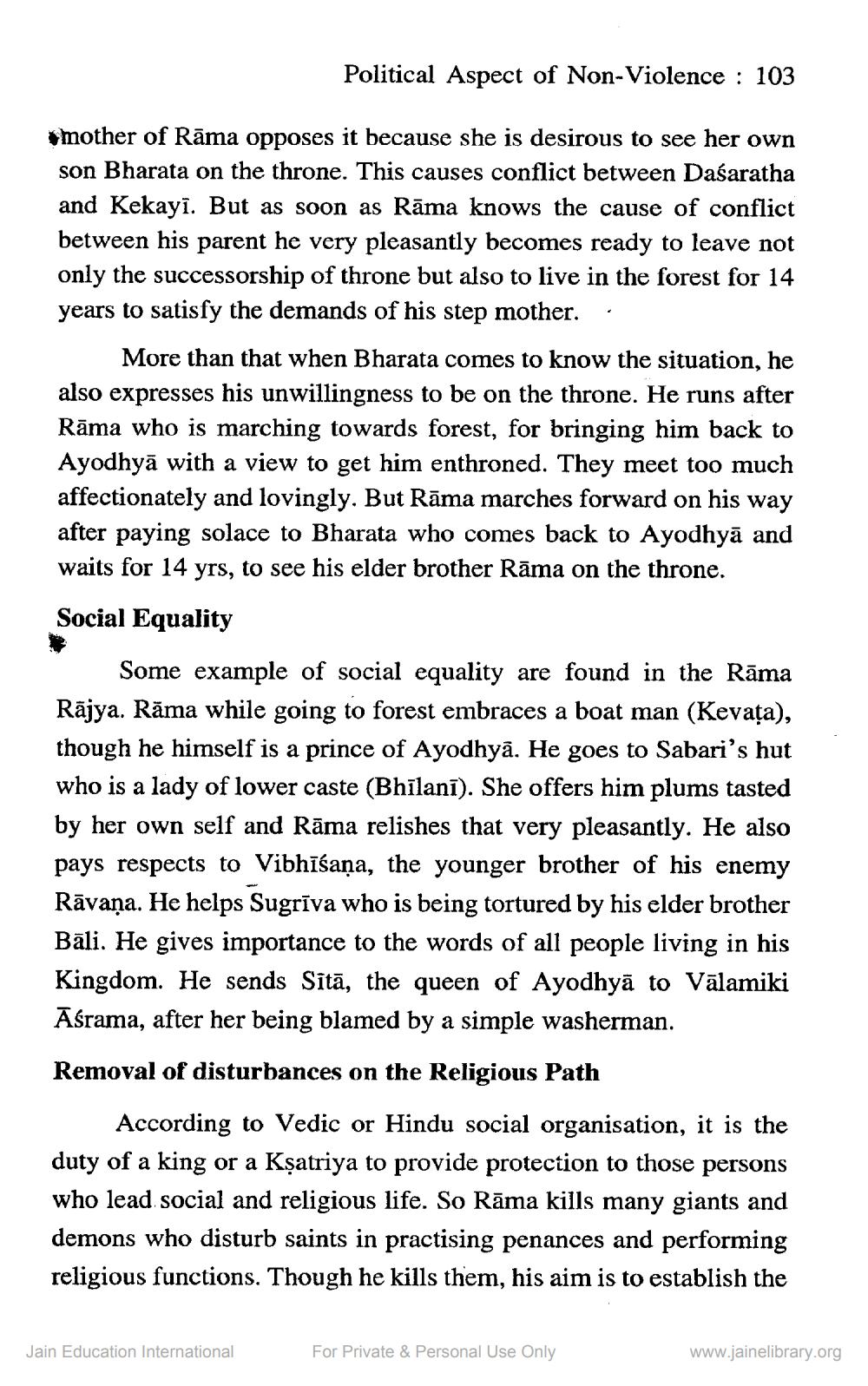________________
Political Aspect of Non-Violence : 103
mother of Rāma opposes it because she is desirous to see her own son Bharata on the throne. This causes conflict between Daśaratha and Kekayī. But as soon as Rāma knows the cause of conflict between his parent he very pleasantly becomes ready to leave not only the successorship of throne but also to live in the forest for 14 years to satisfy the demands of his step mother..
More than that when Bharata comes to know the situation, he also expresses his unwillingness to be on the throne. He runs after Rāma who is marching towards forest, for bringing him back to Ayodhyā with a view to get him enthroned. They meet too much affectionately and lovingly. But Rāma marches forward on his way after paying solace to Bharata who comes back to Ayodhyā and waits for 14 yrs, to see his elder brother Rāma on the throne. Social Equality
Some example of social equality are found in the Rāma Rājya. Rāma while going to forest embraces a boat man (Kevata), though he himself is a prince of Ayodhyā. He goes to Sabari's hut who is a lady of lower caste (Bhīlanī). She offers him plums tasted by her own self and Rāma relishes that very pleasantly. He also pays respects to Vibhīšana, the younger brother of his enemy Rāvaņa. He helps Sugrīva who is being tortured by his elder brother Bāli. He gives importance to the words of all people living in his Kingdom. He sends Sītā, the queen of Ayodhyā to Vālamiki Āśrama, after her being blamed by a simple washerman. Removal of disturbances on the Religious Path
According to Vedic or Hindu social organisation, it is the duty of a king or a Kșatriya to provide protection to those persons who lead social and religious life. So Rāma kills many giants and demons who disturb saints in practising penances and performing religious functions. Though he kills them, his aim is to establish the
Jain Education International
For Private & Personal Use Only
www.jainelibrary.org




